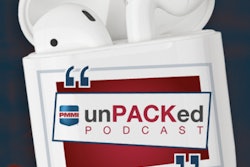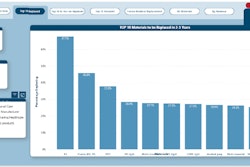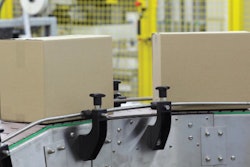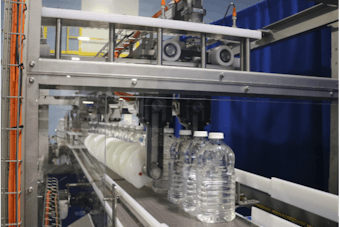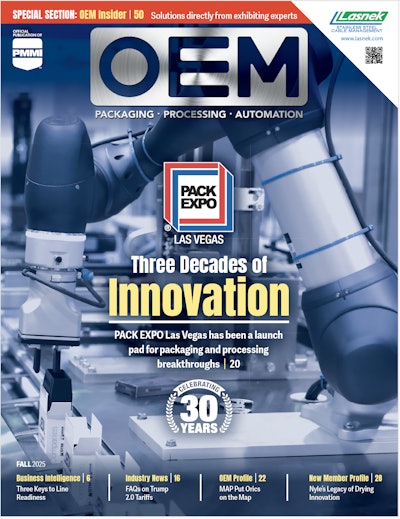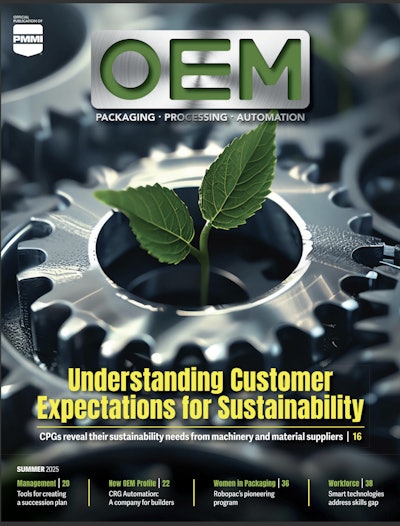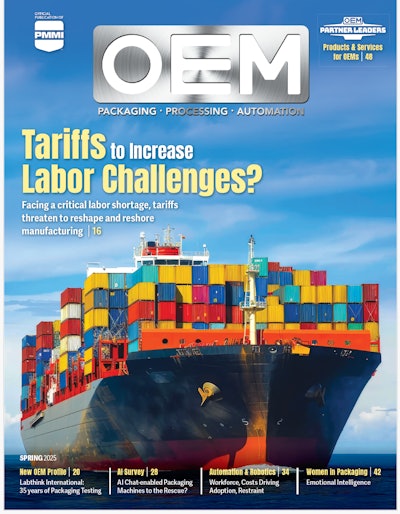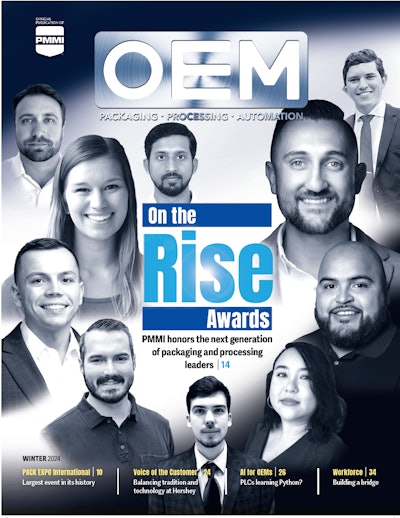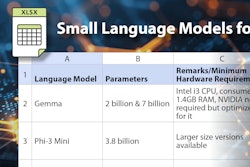In a volatile economic environment driven by shifting trade policies and new investment incentives from the recently passed “One Big Beautiful Bill Act,” OEMs in the packaging and processing industries are being compelled to think strategically about capital expenditures, supply chains, and long-term growth, according to PMMI’s recent Town Hall, Decoding the New CapEx & Investment Tax Legislation. PMMI VP of Market Development Jorge Izquierdo led the webinar with insights from Alex Chausovsky, director of analytics and consulting at The Bundy Group, Michael Collins, VP of sales and marketing at Sterling Contract Packaging, and Mark Navin, VP of sales at Spee-Dee Packaging Machinery.
Here are Six Top Takeaways for OEMs from the hour-long discussion:
1. Business Activity Remains Positive but Uneven
PMMI’s “How’s Business” survey shows healthy proposal activity (index above 50) and modest growth in new orders (54.1), though growth has slowed compared to expectations. Supply chain disruptions, which had been easing since 2022, have ticked up again in Q1 and Q2 2025, creating fresh challenges.
2. Strong Macro Economy, but Industrial Growth Slowing
Q2 2025 GDP grew at an annualized 3%, with consumer spending solid, but business investment declining. Industrial production, critical for OEMs, saw momentum fade after early-year optimism, due to policy uncertainty—especially tariffs.
3. Tariffs Creating Cost Pressures and Uncertainty
Effective U.S. tariff rates have jumped from ~2% to 15–20% in 2025, increasing costs for imported materials like aluminum and steel. OEMs face higher component costs, delayed projects, and difficulty planning, as tariffs are now driven as much by geopolitical aims as trade policy.
4. The “One Big Beautiful Bill Act” Brings Major Tax Incentives
The Act restores 100% bonus depreciation for qualifying capital equipment and revives immediate expensing for domestic R&D, both without sunset provisions. These create opportunities for OEMs and end users to accelerate modernization, automation, and innovation.
5. Impact of Legislation Likely Positive but Modest in Near Term
Past precedent (2017’s Tax Cuts Jobs Act) suggests accelerated depreciation can boost fixed investment, but gains may be modest (0.5–1% extra growth) and delayed until budget cycles catch up—especially while inflation, labor constraints, and tariff uncertainty persist.
6. Strategic Outlook: Cautious Optimism, Cost Control First
Industry leaders expect 2026 to bring stronger CapEx activity, helped by potential interest rate cuts once tariff-driven inflation pressures ease. Until then, OEMs are urged to prioritize operational efficiency, workforce retention in key roles, and margin protection while preparing to act quickly when conditions improve.
Click here to watch an on-demand video of the PMMI Town Hall: Decoding the New CapEx & Investment Tax Legislation.





